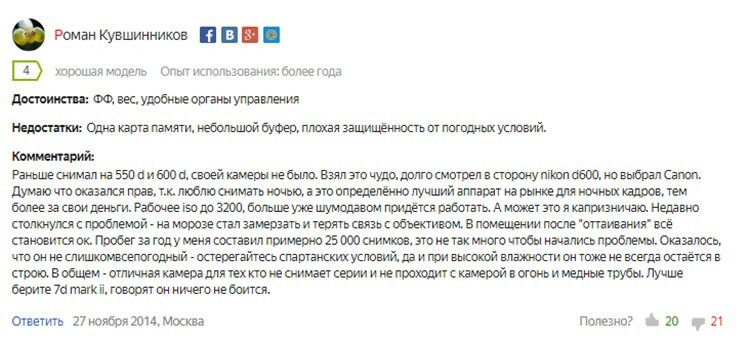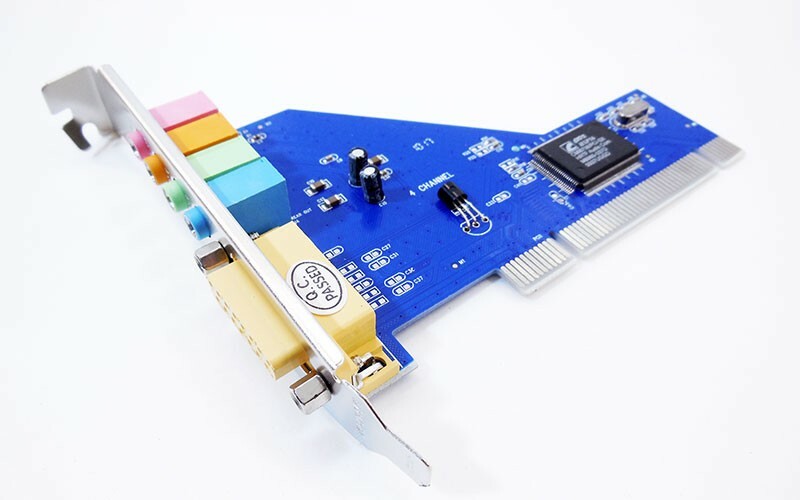When purchasing jewelry, you need to make sure of the quality of the product by asking the seller for all the relevant documents, certificates and technical specifications. Only such a responsible approach will make it possible to dispense with recommendations that will help how to check gold at home for authenticity, and to make sure of the correctness of the specified sample. On the other hand, today there are a lot of worked out fraudulent schemes, according to which even self-respecting producers try to get more profit from consumers.
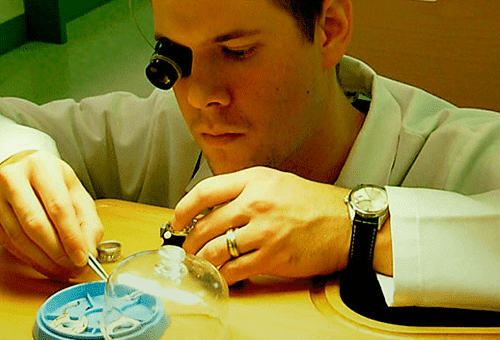
It is worth considering that the present, pure gold is a very soft material, not resistant to wear and impact, therefore it is customary to make decorations from a more durable but not less beautiful alloy.
This is what some organizations use, adding too many impurities. But not even the most sophisticated lover of beauty is able to approximately determine the level of quality to which the product belongs.
The most accessible scientific approaches to the process that can be used independently
Such tests are based on the simplest physical and chemical experiments that even a schoolboy is able to cope with. It is necessary only to stock up a number of tools and reagents.

These approaches will allow to check gold only if it is necessary to make sure of its high or low quality, and not to establish the exact mass fraction of the impurity content.
- Iodine. Iodine gold treatment is the most popular and reliable home method. We drip one drop of solution on the product, wait three minutes and evaluate the results of the chemical reaction. If after removing the reagent the surface has not changed its color, then it can be said with certainty that this is a high-quality metal. If necessary, you can even make a scratch on the surface and drip with iodine into it. If on the gold there is any trace, different from the original, this is a sign of forgery.
- Vinegar. If there is no possibility to use the variant with iodine, then ordinary vinegar will help. Pour it into a dry, clean container, do not dilute it and immerse the chosen ornament. We are waiting for half an hour - an object that has changed its color, like a fake one.
- Chlorine gold. Not the most accessible, but very effective way. The chemical composition is applied directly to the product. Qualitative gold will not react with it, and no changes will follow. Forgery will give itself out by a change in color or hiss.
- Lyapis. A pencil from this material can be purchased at a pharmacy. We take the experimental product, we moisten it with water, we apply a small point to the acquired reagent. If there is no reaction, we are dealing with gold. If the process of oxidation or other chemical manifestations has begun, then gold is not real.
- Magnet. If the gold coating is applied directly to the metal substrate, then this will help identify a large magnet. Unfortunately, most of the materials used as a basis for counterfeits do not react to this test.
- Archimedes Method. In our time it is used very rarely, becauseOnly valid for large items. And the process of carrying out mathematical calculations based on physical formulas is quite troublesome. It is necessary to calculate how much water will be displaced by the product, on the basis of which the density of the composition is determined.
- Unbaked ceramic tiles. We take the gold object and conduct it on the surface of the tile, then evaluate the quality of the trace. If it is black or gray, then this is the most common metal. Gold leaves golden traces.
It is necessary to understand that using the listed methods, it is possible to insignificantly( and if it is a matter of forgery, it is very strong) to damage the surface of the object.
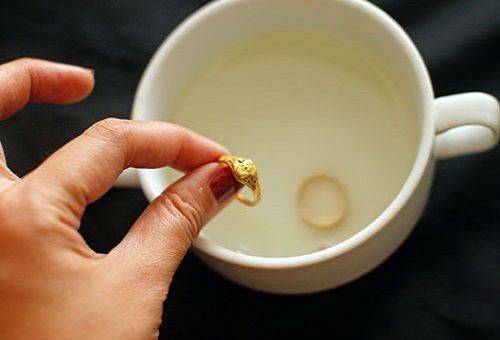
Folk methods for determining the authenticity of gold metal
There are several other approaches that will help evaluate the gold product. True, they are less accurate and informative than previous variations.
- According to the sound. A good solution for those who have a fine hearing. Practice shows that people who regularly apply this approach, can determine the quality of the product with a high level of accuracy. You just need to throw the chosen thing from a small height to a very flat and dense surface. Real gold will produce a sound comparable to the sound of two crystal glasses. However, for soft and flowing products( bracelets, chains) this option does not work.
- Check for durability. Back in ancient times, everyone knew that you need to check the gold for a tooth to assess its authenticity. But then it was done to make sure of the softness of the material, which indicated the absence of impurities. Today, the object is taken to scratch with a very sharp instrument, this makes it possible to verify the uniformity of the metal. The presence of a dark layer beneath the coating indicates a poor quality of raw materials.
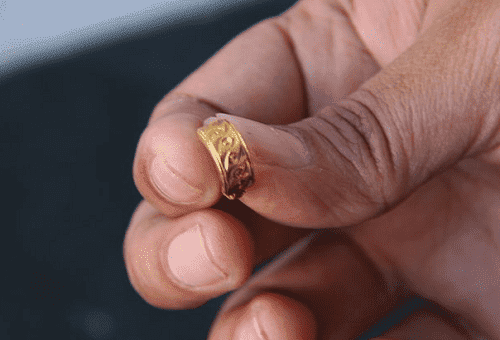
Tip: The described method has a specific nature. Scraped need hidden areas, this will preserve the attractive appearance of the product. But you should not use small parts( denticles, clasps) for the test, they are often checked during the evaluation and certification of the product, so they can turn out to be qualitative, unlike the main part of the decoration.
- Contact with gold. It is necessary to draw two lines of the same size and depth on the test sample and high-quality gold of the product. If the obtained prints are completely identical, then the product is genuine.
- Reaction to the sun. Real gold glitters equally expressively both in the sun and in the shade. If an object is first examined in the shade, then taken out under direct sunlight, it is easy to determine the difference in the appearance of the decoration under different conditions.
- Black bread. The crumb of black bread is bred with a small amount of water and kneaded to a state of homogeneous gruel. In it we place the experimental specimen, we try to glue it well over the metal. We put the product back and wait until the composition withers. Then break the product and inspect its internal surface. If gold is of high quality, then it will not leave any traces. Otherwise, it will be possible to detect traces of oxidation.
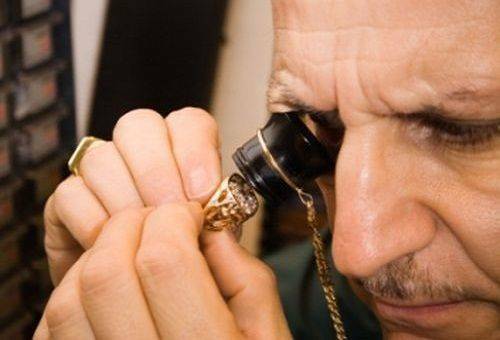
If the above methods did not help determine the quality of the product, it is not worthwhile to achieve results by increasing the concentration of reagents, increasing the duration of their effects, increasing the indicators of the applied force. It is better to contact a professional and establish all the indicators of interest with his help.


